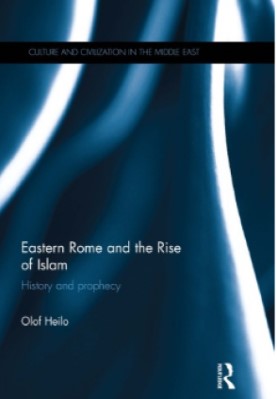Eastern Rome and the Rise of Islam: History and Prophecy

| Eastern Rome And The Rise Of Islam |
| Olof Heilo |
| 163 |
| |
| PDF Direct Download Link |
| Click for Hard Copy from Amazon |
EASTERN ROME AND THE RISE OF ISLAM – Book Sample
About the Book -Eastern Rome and the Rise of Islam
The-emergence of Islam in the seventh century AD still polarises scholars who seek to separate religious truth from the historical reality with which it is associated.
However, history and prophecy are not solely defined by positive evidence or apocalyptic truth, but by human subjects, who consider them to convey distinct messages and in turn make these messages meaningful to others.
These messages are mutually interdependent, and analysed together provide new insights into history.
It is by way of this concept that Olof Heilo presents the decline of the Eastern Roman Empire as a key to understanding the rise of Islam – two historical processes often perceived as distinct from one another.
Eastern Rome and the Rise of Islam highlights significant convergences between Early Islam and the Late Ancient world. It suggests that Islam’s rise is a feature of a common process during which tensions between imperial ambitions and apocalyptic beliefs in Europe and the Middle East cut straight across today’s theological and political definitions.
The conquests of Islam, the emergence of the caliphate, and the transformation of the Roman and Christian world are approached from both prophetic anticipations in the Ancient and Late Ancient world, and from the Medieval and Modern receptions of history. In the shadow of their narratives it becomes possible to trace the outline of a shared history of Christianity and Islam.
The “Dark Ages” thus emerge not merely as a tale of sound and fury, but as an era of openness, diversity and unexpected possibilities.
Approaching the rise of Islam as an historical phenomenon, this book opens new perspectives in the study of early religion and philosophy, as well as providing a valuable resource for students and scholars of Islamic Studies.
Olof Heilo obtained his PhD at the Institute for Byzantine and Modern Greek Studies in Vienna and is currently teaching history at the Center for Middle Eastern Studies in Lund.
Guardians of Paradise
‘Abd al-Ma-lik brought a new name for the highest authority of the Muslims into common use: caliph. The Arabic word means “deputy”, “vicar” or “successor”, and later Islamic tradition asso- ciated the title with the political succession from the prophet, which made it appear more or less synonymous to the title Commander of the Believers.52 It is worth noting, however, that the word has a very considered use in the Qur’an, where it is said that Adam, the first man, was created to be the “caliph of God” upon earth. This can mean little more than “vicar” or “deputy”, not “successor”; it is also used with reference to the Biblical King David in the Holy Land.53 It is tempting to connect the Umayyad use of the title with the geographical setting of the Biblical lands that made up the core part of their empire.54 If the Commander of the Believers is also caliph of
God in the terrestrial Paradise, it explains why Isla-m as a political commit-
ment remains a religious virtue. It unites the believers by the purpose of guarding and extending the common Da-r al-Isla- m instead of fighting each
other in pursuit of individual gain, and the prerogative of the caliph to pro- claim jiha- d or “holy struggle” – and the notion of a heavenly reward for any
physical sacrifice it may involve – completes the picture. The bellicose lan- guage that had first pervaded the conquests may have been eschatological, but even in times of peace it offered a compelling parable for the inner, spiritual life of the community. It is not to say that we have to do with a purified idea
of a “spiritual jiha-d” as promoted by later Su- f-ı groups,55 but that eschatolo-
gical and non-eschatological objectives are convergent down to the level of the individual believer whose striving towards God goes through the community, the umma. As Blankinship stressed, even the common prayers in a mosque carry a strong resemblance to a battlefield formation, with the community standing in wide, horizontal ranks behind the prayer-leader, and with a par- ticular virtue being connected to praying in the first row56 – a contrast in shape and orientation to the Christian basilica that becomes particularly conspicuous in the first monumental mosque of Islam.
Faiths and cults had come and gone in the Fertile Crescent since the dawn of history, and being one of the oldest inhabited places on earth, Damascus had housed many of them. What had once been built as a temple to the Aramean storm god Hadad had been extended in the Hellenistic and Roman eras when it was used as a temple to Zeus or Jupiter, only to be converted into a church when the Emperor Theodosius I suppressed all Pagan cults in
391.57 Dedicated to Saint John the Baptist, the church must have filled or
replaced the space of the closed temple naos or cella that stood in the middle of the wide, colonnaded temenos courtyard, its rectangular shape aligning on the east
To read more about the Eastern Rome And The Rise Of Islam book Click the download button below to get it for free
Report broken link
Support this Website
for websites